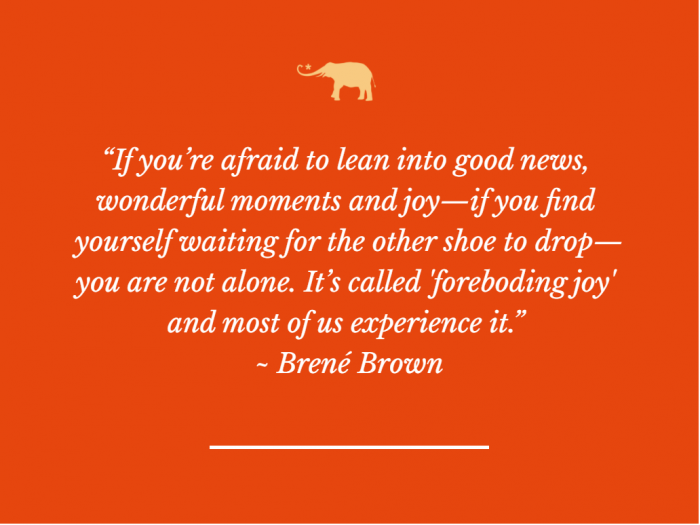~
Brené Brown’s new book has been unexpectedly triggering for me.
Yet, it has quickly become the unique reference for articulating human emotions I didn’t know I needed.
Taking in the pages over the past week—narrated in my mind with her familiar voice, one akin to a treasured longtime friend—has encouraged intense emotional experiences throughout my life to swirl to the surface.
I’ve always been a feely person, and can revisit my first experience of discomfort for this trait as if it were yesterday.
In the lead-up to Christmas break in 1990, my first grade class with Mrs. Arneson walked across the hall to Mrs. Ort’s classroom, where the large tube TV affixed to the towering cart on wheels was centered in the front of the blackboards. Both classes of squirrely six and seven-year-olds were willing to sit still in exchange for viewing one of the most popular films of our childhood generation, “The Land Before Time.”
If you’re unfamiliar, this movie is basically Bambi with charming young dinosaurs. I cried through most of it, feeling the childhood equivalent looks of WTF from my peers, eventually leading to me sobbing uncontrollably under Mrs. Ort’s desk, whom I knew merely as the teacher across the hall.
Decades later, I now wonder if I was one of the only kids in class who hadn’t already seen this movie in theaters or rented it at home. Or maybe there were others stifling their tears, my enormous reaction simply drawing the attention away.
This emotional memory, among many others, was triggered while breaking into Brené Brown’s newly released book, Atlas of the Heart: Mapping Meaningful Connection and the Language of Human Experience.
I’m a fan of Brené‘s work, owning well-worn copies of all her books, regularly listening to her podcast, and often throwing on her Netflix special in the background while multitasking around the house.
Her new book is different from her others. With thick, glossy pages, pictures, and color—much like what you would find in a National Geographic hardcover atlas—but referencing 87 human emotions versus a particular part of the world.
As described on her website:
“If we want to find the way back to ourselves and one another, we need language and the grounded confidence to both tell our stories and to be stewards of the stories that we hear. In Atlas of the Heart, we explore 87 of the emotions and experiences that define what it means to be human and walk through a new framework for cultivating meaningful connection. This is for the mapmakers and travelers in all of us.”
Sold. As a true map lover with Bachelor’s degree in Geography and City Planning and a campervan adventure enthusiast, I was especially excited for the release of this book for its unique format focusing on my often obvious appreciation for human emotion.
I’ll spare the long-winded personal review, but simply advise it lives up to the hype!
“Heart is sea, language is shore. Whatever sea includes, will hit the shore.” ~Rumi
When my son was born with an ultra-rare, incurable, terminal genetic disorder back in 2014, the Franklin D. Roosevelt quote: “A smooth sea never made a skilled sailor” became a personal mantra.
My husband and I have taken the life approach of “one wave at a time,” focusing on the little and big things we can control ever since. It’s been working well for us in our unique life circumstances with our son, Leo. I sprinkle bits about our experience raising Leo in all my writing, so to avoid repetition, more can be found here.
2021 has been an especially tumultuous sea for me: death of a primary loved one, unforeseen and uncharacteristic hospitalizations for Leo, leaving the comfort zone of my day job of the past six years, experiencing deliberate and hurtful exclusion—to name a few of the white-capped wave lowlights of the year. On the bright side, these events provided the catalytic opportunity to find and work with a skilled therapist on a weekly basis.
While reading Atlas of the Heart, I’ve realized through our process of handling one wave at a time and focusing on the horizon to keep our balance and stay afloat on our epic journey, several waves have passed us by relatively unnoticed. Or, it’s possible we simply steered our metaphorical houseboat away from these particular waves with innate purpose.
In Chapter six, Places We Go When We’re Hurting, the emotion of anguish is discussed with photo reference to a painting by August Friedrich Albrecht Schenck—a pained mother ewe, bellowing over her dead lamb in the snow, surrounded by a murder of crows. This haunting visualization took my breath away, immediately transporting me back to our emotion-filled experience learning of Leo’s diagnosis, while hospitalized days after his overshadowed beautiful, natural, hypnobabies water birth.
We have been intentionally choosing to ride waves of curiosity, hope, vulnerability, gratitude, compassion, and joy with unwavering determination.
In doing so, I believe skirting around the anguish, hopelessness, despair, fear, and deep grief—for now—has been our secret to living our life with Leo miraculously and joyfully well as possible thus far.
Another one of the 87 emotions Brené touches on, unfamiliar to me, is foreboding joy.
“If you’re afraid to lean into good news, wonderful moments and joy—if you find yourself waiting for the other shoe to drop—you are not alone. It’s called ‘foreboding joy’ and most of us experience it.”
She goes on to reference, “When we push away joy, we squander the goodness that we need to build resilience, strength, and courage.”
This is how we’ve done it.
We know what’s coming. We know the imminent devastation that lies ahead, so we have over time embodied curiosity, hope, vulnerability, gratitude, compassion, and joy to literally make the most of the preciousness of living in the now. She continues:
“In our research, we found that everyone who showed a deep capacity for joy had one thing in common: they practiced gratitude. In the midst of joy, there’s often a quiver, a shudder of vulnerability. Rather than using that as a warning sign to practice imagining the worst-case scenario, the people who lean into joy use the quiver as a reminder to practice gratitude.”
These more challenging, excruciating at times emotions will be worked through eventually. Layer by layer, with loving intention.
When those days do come, and likely on a smaller scale in the meantime, I’ll be grateful for Brené’s encyclopedia of emotion to abundantly aid in my articulation and understanding.











Read 22 comments and reply